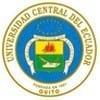Resistance to common antimicrobial compounds
Antibiotic Resistance Awareness among Undergraduate Students in Quito, Ecuador
Author details:





1. World Health Organization. Global Plan on Antimicrobial Resistance; WHO Press: Geneve, Switzerland, 2015; pp. 1–28.
2. Inoue, H.; Minghui, R. Antimicrobial resistance: Translating political commitment into national action. Bull. World Health Organ. 2017, 95, 242. [CrossRef] [PubMed]
3. Zankari, E.; Allesøe, R.; Joensen, K.G.; Cavaco, L.M.; Lund, O.; Aarestrup, F.M. PointFinder: A novel web tool for WGS-based detection of antimicrobial resistance associated with chromosomal point mutations in bacterial pathogens. J. Antimicrob. Chemother. 2017, 72, 2764–2768. [CrossRef] [PubMed]
4. Partridge, S.R.; Kwong, S.M.; Firth, N.; Jensen, S.O. Mobile Genetic Elements Associated with Antimicrobial Resistance. Clin. Microbiol. Rev. 2018, 31, e00088-17. [CrossRef]
5. Torres-Elizalde, L.; Ortega-Paredes, D.; Loaiza, K.; Fernández-Moreira, E.; Larrea-Álvarez, M. In Silico Detection of Antimicrobial Resistance Integrons in Salmonella enterica Isolates from Countries of the Andean Community. Antibiotics 2021, 10, 1388. [CrossRef]
6. Huddleston, J.R. Horizontal gene transfer in the human gastrointestinal tract: Potential spread of antibiotic resistance genes. Infect. Drug Resist. 2014, 7, 167–176. [CrossRef] [PubMed]
7. Holmes, A.H.; Moore, L.S.P.; Sundsfjord, A.; Steinbakk, M.; Regmi, S.; Karkey, A.; Guerin, P.J.; Piddock, L.J.V. Understanding the mechanisms and drivers of antimicrobial resistance. Lancet 2016, 387, 176–187. [CrossRef]
8. Hsu, J. How COVID-19 is accelerating the threat of antimicrobial resistance. BMJ 2020, 369, m1983. [CrossRef]
9. Ayukekbong, J.A.; Ntemgwa, M.; Atabe, A.N. The threat of antimicrobial resistance in developing countries: Causes and control strategies. Antimicrob. Resist. Infect. Control. 2017, 6, 47. [CrossRef]
10. Iskandar, K.; Molinier, L.; Hallit, S.; Sartelli, M.; Catena, F.; Coccolini, F.; Hardcastle, T.C.; Roques, C.; Salameh, P. Drivers of antibiotic resistance transmission in low-and middle-income countries from a “one health” perspective—A review. Antibiotics 2020, 9, 372. [CrossRef]
11. DiGennaro, F.; Marotta, C.; Pisani, L.; Veronese, N.; Pisani, V.; Lippolis, V.; Pellizer, G.; Pizzol, D.; Tognon, F.; Bavaro, D.F.; et al. Maternal caesarean section infection (MACSI) in Sierra Leone: A case–control study. Epidemiol. Infect. 2020, 148, e40. [CrossRef]
12. Plan Nacional Para la Prevención y Control de la Resistencia Antimicrobiana. 2019. Available online: https://www.salud. gob.ec/wp-content/uploads/2019/10/Plan-Nacional-para-la-prevencion-y-control-de-la-resistencia-antimicrobiana_2019 _compressed.pdf (accessed on 6 January 2022).
13. Politíca Nacional de Medicamentos. 2017. Available online: https://www.salud.gob.ec/wp-content/uploads/2017/03/Politica Nacional-de-Medicamentos-con-acuerdo.pdf (accessed on 6 January 2022).
14. LEY ORGÁNICA DE SALUD. 2012. Available online: https://www.salud.gob.ec/wp-content/uploads/2017/03/LEY ORGANICA-DE-SALUD4.pdf (accessed on 6 January 2022).
15. Marusinec, R.; Kurowski, K.M.; Amato, H.K.; Saraiva-Garcia, C.; Loayza, F.; Salinas, L.; Trueba, G.; Graham, J.P. Caretaker knowledge, attitudes, and practices (KAP) and carriage of extended-spectrum beta-lactamase-producing E. coli (ESBL-EC) in children in Quito, Ecuador. Antimicrob. Resist. Infect. Control 2021, 10, 2. [CrossRef] [PubMed]
16. Butzin-Dozier, Z.; Waters, W.F.; Baca, M.; Vinueza, R.L.; Saraiva-Garcia, C.; Graham, J. Assessing upstream determinants of antibiotic use in small-scale food animal production through a simulated client method. Antibiotics 2021, 10, 2. [CrossRef] [PubMed]
17. Lowenstein, C.; Waters, W.F.; Roess, A.; Leibler, J.H.; Graham, J.P. Animal Husbandry Practices and Perceptions of Zoonotic Infectious Disease Risks among Livestock Keepers in a Rural Parish of Quito, Ecuador. Am. J. Trop. Med. Hyg. 2016, 95, 1450–1458. [CrossRef] [PubMed]
18. Justo, J.A.; Gauthier, T.P.; Scheetz, M.H.; Chahine, E.B.; Bookstaver, P.B.; Gallagher, J.C.; Hermsen, E.D.; DePestel, D.D.; Ernst, E.J.; Jacobs, D.M.; et al. Knowledge and attitudes of doctor of pharmacy students regarding the appropriate use of antimicrobials. Clin. Infect. Dis. 2014, 59, S162–S169. [CrossRef] [PubMed]
19. Machowska, A.; Lundborg, C.S. Drivers of irrational use of antibiotics in Europe. Int. J. Environ. Res. Public Health 2019, 16, 27. [CrossRef]
20. Marzan, M.; Islam, D.Z.; Lugova, H.; Krishnapillai, A.; Haque, M.; Islam, S. Knowledge, attitudes, and practices of antimicrobial uses and resistance among public university students in Bangladesh. Infect. Drug Resist. 2021, 14, 519–533. [CrossRef]
21. Sawalha, A.F. A descriptive study of self-medication practices among Palestinian medical and nonmedical university students. Res. Soc. Adm. Pharm. 2008, 4, 164–172. [CrossRef]
22. Shahpawee, N.S.; Chaw, L.L.; Muharram, S.H.; Goh, H.P.; Hussain, Z.; Ming, L.C. University Students’ Antibiotic Use and Knowledge of Antimicrobial Resistance: What Are the Common Myths? Antibiotics 2020, 9, 349. [CrossRef]
23. Sakeena, M.H.F.; Bennett, A.A.; Jamshed, S.; Mohamed, F.; Herath, D.R.; Gawarammana, I.; McLachlan, A.J. Investigating knowledge regarding antibiotics and antimicrobial resistance among pharmacy students in Sri Lankan universities. BMC Infect. Dis. 2018, 18, 209. [CrossRef]
24. Sánchez, X.; Landázuri, A.; Londo, P.; Manzano, A.; Roca, A.M.; Jimbo, R. Knowledge, Attitudes and Practices in Antibiotic Use in Family Medicine Students. J. Prim. Care Community Health 2020, 11, 2150132720984758. [CrossRef]
25. Mathew, P.; Sivaraman, S.; Chandy, S. Communication strategies for improving public awareness on appropriate antibiotic use: Bridging a vital gap for action on antibiotic resistance. J. Fam. Med. Prim. Care 2019, 8, 1867–1871. [CrossRef]
26. Thornber, K.; Pitchforth, E. Communicating antimicrobial resistance: The need to go beyond human health. JAC-Antimicrobial. Resist. 2021, 3, dlab096. [CrossRef] [PubMed]
27. Quizhpe, P.A.; Gassowski, M.; Encalada, T.L.; Barten, F. Differences in antibiotic use and knowledge between adolescent and adult mothers in Ecuador. F1000Research 2013, 2, 108. [CrossRef] [PubMed]
28. Ortiz-Martínez, Y.; Moreno-Babilonia, C. Antibiotic prescribing and resistance: Knowledge among Latin American medical students during Antibiotic Awareness Week 2016. J. Hosp. Infect. 2017, 96, 301. [CrossRef]
29. Ortega-Paredes, D.; Larrea-Álvarez, C.; Herrera, M.; Fernandez-Moreira, E.; Larrea-Álvarez, M. Assessing knowledge of genetics in undergraduate students in Quito, Ecuador. F1000Research 2019, 8, 290. [CrossRef] [PubMed]
30. Ortega-Paredes, D.; Larrea-álvarez, C.M.; Jijón, S.I.; Loaiza, K.; Šefcová, M.A.; Molina-Cuasapaz, G.; Barba, P.; Vinueza-Burgos, C.; Fernandez-Moreira, E.; Ramírez, H.; et al. A Cross-Sectional Study to Assess Knowledge of COVID-19 among Undergraduate Students in North-Central Ecuador. Int. J. Environ. Res. Public Health 2021, 18, 8706. [CrossRef]
31. Hill, E.M. Decision making about antibiotic use: Examining the role of antibiotic resistance knowledge, concern, and previous inappropriate antibiotic use. J. Commun. Healthc. 2017, 10, 226–233. [CrossRef]
32. Scaioli, G.; Gualano, M.R.; Gili, R.; Masucci, S.; Bert, F.; Siliquini, R. Antibiotic Use: A cross-sectional survey assessing the knowledge, attitudes and practices amongst students of a school of medicine in Italy. PLoS ONE 2015, 10, e0122476. [CrossRef]
33. Abu, M.; Alshraideh, H.; Hijazeen, J.; Al, A.; Al, M. Antibiotic s Use and Misuse among University Students in Jordan. Bull. Environ. Pharmacol. Life Sci. 2015, 4, 62–71.
34. Prigitano, A.; Romanò, L.; Auxilia, F.; Castaldi, S.; Tortorano, A.M. Antibiotic resistance: Italian awareness survey 2016. J. Infect. Public Health 2018, 11, 30–34. [CrossRef]
35. Haque,M.; Rahman, N.A.A.; McKimm, J.; Sartelli, M.; Kibria, G.M.; Islam, M.Z.; Lutfi, S.N.N.B.; Othman, N.S.A.B.; Abdullah, S.L.B. Antibiotic Use: A Cross-Sectional Study Evaluating the Understanding, Usage and Perspectives of Medical Students and Pathfinders of a Public Defence University in Malaysia. Antibiotics 2019, 8, 154. [CrossRef]
36. Zaidi, S.F.; Alotaibi, R.; Nagro, A.; Alsalmi, M.; Almansouri, H.; Khan, M.A.; Khan, A.; Memon, I. Knowledge and Attitude Towards Antibiotic Usage: A Questionnaire-Based Survey Among Pre-Professional Students at King Saud bin Abdulaziz University for Health Sciences on Jeddah Campus, Saudi Arabia. Pharmacy 2020, 8, 5. [CrossRef]
37. Cambaco, O.; Alonso Menendez, Y.; Kinsman, J.; Sigaúque, B.; Wertheim, H.; Do, N.; Gyapong, M.; John-Langba, J.; Sevene, E.; Munguambe, K. Community knowledge and practices regarding antibiotic use in rural Mozambique: Where is the starting point for prevention of antibiotic resistance? BMC Public Health 2020, 20, 1183. [CrossRef] [PubMed]
38. Sakeena, M.H.F.; Bennett, A.A.; Carter, S.J.; McLachlan, A.J. A comparative study regarding antibiotic consumption and knowledge of antimicrobial resistance among pharmacy students in Australia and Sri Lanka. PLoS ONE 2019, 14, e0213520. [CrossRef]
39. Pearson, M.; Chandler, C. Knowing antmicrobial resistance in practice: A multi-country qualitative study with human and animal healthcare professionals. Glob. Health Action 2019, 12, 1599560. [CrossRef]
40. Usman,I.M.; Ssempijja, F.; Ssebuufu, R.; Lemuel, A.M.; Archibong, V.B.; Ayikobua, E.T.; Aruwa, J.O.; Kembabazi, S.; Kegoye, E.S.; Ayuba, J.T.; et al. Community Drivers Affecting Adherence to WHO Guidelines Against COVID-19 Amongst Rural Ugandan Market Vendors. Front. Public Health 2020, 8, 340. [CrossRef]
41. Webster, R.K.; Brooks, S.K.; Smith, L.E.; Woodland, L.; Wessely, S.; Rubin, G.J. How to improve adherence with quarantine: Rapid review of the evidence. Public Health 2020, 182, 163–169. [CrossRef] [PubMed]
42. Gajdács, M.; Paulik, E.; Szabó, A. Knowledge, Attitude and Practice of Community Pharmacists Regarding Antibiotic Use and Infectious Diseases: A Cross-Sectional Survey in Hungary (KAPPhA-HU). Antibiotics 2020, 9, 41. [CrossRef]
43. Hu, Y.; Wang, X.; Tucker, J.D.; Little, P.; Moore, M.; Fukuda, K.; Zhou, X. Knowledge, Attitude, and Practice with Respect to Antibiotic Use among Chinese Medical Students: A Multicentre Cross-Sectional Study. Int. J. Environ. Res. Public Health 2018, 15, 1165. [CrossRef] [PubMed]
44. Ortega-Paredes, D.; Zurita, J.; Zurita, C.; Leoro-Garzón, P.; Leoro-Monroy, G.; Larrea-Álvarez, C.M.; Loaiza, K.; Fernandez Moreira, E.; Molina-Cuasapaz, G.; Larrea-Álvarez, M. An On-Line Cross-Sectional Questionnaire to Assess Knowledge of COVID-19 Pandemic among Citizens Tested for the SARS-CoV-2 Virus in Quito and Ibarra, Ecuador. Int. J. Environ. Res. Public Health 2021, 18, 1691. [CrossRef] [PubMed]
45. Rao, G.G. Risk Factors for the Spread of Antibiotic-Resistant Bacteria. Drugs 1998, 55, 323–330. [CrossRef]
46. Nisabwe,L.;Brice, H.; Umuhire, M.C.; Gwira, O.; Harelimana, J.D.D.; Nzeyimana, Z.; Sebatunzi, O.R.; Rusingiza, E.K.; Hahirwa, I.; Muvunyi, C.M. Knowledge and attitudes towards antibiotic use and resistance among undergraduate healthcare students at University of Rwanda. J. Pharm. Policy Pract. 2020, 13, 7. [CrossRef] [PubMed]
47. DiGennaro, F.; Marotta, C.; Amicone, M.; Bavaro, D.F.; Bernaudo, F.; Frisicale, E.M.; Kurotschka, P.K.; Mazzari, A.; Veronese, N.; Murri, R.; et al. Italian young doctors’ knowledge, attitudes and practices on antibiotic use and resistance: A national cross sectional survey. J. Glob. Antimicrob. Resist. 2020, 23, 167–173. [CrossRef] [PubMed]
48. Raosoft Inc. Sample Size Calculator. 2004. Available online: http://www.raosoft.com/samplesize.html (accessed on 1 June 2019).
49. Reporte Matriculados por Facultad. Enero–Agosto. Universidad Central del Ecuador. 2019. Available online: https://reportes. uce.edu.ec/Matriculados/Matriculados.aspx (accessed on 10 May 2019).
50. WorldHealth Organization. Antibiotic Resistance: Multi-Country Public Awareness Survey; World Health Organization: Geneva, Switzerland, 2015; Available online: https://apps.who.int/iris/handle/10665/194460 (accessed on 1 August 2019).
51. Lee,D.K.Alternatives to P value: Confidence interval and effect size. Korean J. Anesthesiol. 2016, 69, 555–562. [CrossRef] [PubMed]
52. Nakagawa, S.; Cuthill, I.C. Effect size, confidence interval and statistical significance: A practical guide for biologists. Biol. Rev. 2007, 82, 591–605. [CrossRef]
53. Kalinowski, P. Understanding Confidence Intervals (CIs) and Effect Size Estimation. APS Obs. 2010, 23, 4.
54. Halsey, L.G. The reign of the p-value is over: What alternative analyses could we employ to fill the power vacuum? R. Soc. 2019, 15, 20190174. [CrossRef]
















